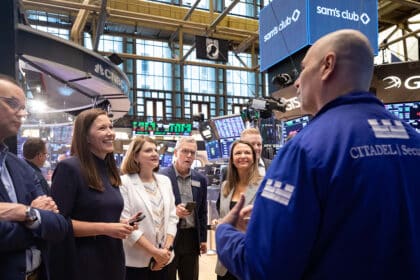The ongoing negotiations surrounding the US debt ceiling have been a key focal point for investors as the June 1 deadline approaches.
The United States Treasury bond market experienced a decline in yields on Friday as investors eagerly await the release of key inflation data and updates on debt ceiling negotiations.
According to reports, the yield on the 10-year Treasury fell by 3 basis points to 3.829%, while the 2-year Treasury yield dropped by nearly 6 basis points to 4.57%. It is important to note that yields and prices move in opposite directions. A basis point is one-hundredth of a percentage point, which equals 0.01%. Thus, a 3 basis point reduction signifies that the 10-year Treasury yield has decreased by 0.03% from its prior level.
Treasury yield fluctuation provides information on investor sentiment and market dynamics. When yield falls, it indicates that investors are seeking safer assets in response to a variety of circumstances, interest rate hikes, geopolitical events, or changes in monetary policy expectations.
The release of the April Personal Consumption Expenditures (PCE) price index, considered the Federal Reserve’s favored gauge of inflation, was keenly anticipated by investors. The PCE index gives insight into changes in consumer prices paid for goods and services, serving as an important indication of inflationary pressures in the economy.
Per the data revealed, the PCE came in at 4.7% year-on-year, higher than the previous reading of 4.6%.
PCE Services inflation continued to rise to 5.5% (prev. 4.6%), and goods inflation also rebounded to 2.1% (prev. 1.6%). pic.twitter.com/Uhv8C8L9xO
— MacroMicro (@MacroMicroMe) May 26, 2023
Treasury Yield Performance: Impact of Interest Rate Hike
The US Federal Reserve has complete control over the country’s monetary policies, and interest rates which ultimately impact the Treasury Yield performance. Markedly, the Fed effectively decides how banks lend and borrow money among themselves.
The Federal Reserve has continued to raise interest rates, increasing the rate by 25 basis points earlier in May, a move that is generating concern about the potential impact. The apex institution has been boosting the interest rate on a continuous basis in order to prevent soaring inflation. The most recent increase is the tenth in about a year, and it is the Fed’s fastest rate climb since the early 1980s.
However, officials have sent conflicting signals about the possible path of further interest rate hikes. While some officials have expressed a preference for pausing the rate-hiking campaign, others believe that further rate hikes might be necessary to take the inflation to the desired level of around 2%.
Sentiments Surrounding the Debt Ceiling Talks
The ongoing negotiations surrounding the US debt ceiling have been a key focal point for investors as the June 1 deadline approaches, heightening concerns about a potential default on the country’s debt obligations. While talks have shown signs of progress, there are still sensitive issues that need to be addressed, according to Republican negotiator Rep. Patrick McHenry.
Ultimately, the resolution of these issues is crucial to avoid a potential default on US debt obligations, which could have far-reaching implications for financial markets. Market participants remain hopeful for a successful resolution that will restore market confidence and demonstrate the commitment of the US government to meet its debt obligations.
next